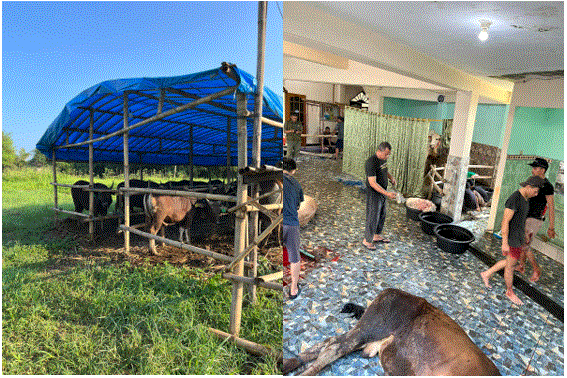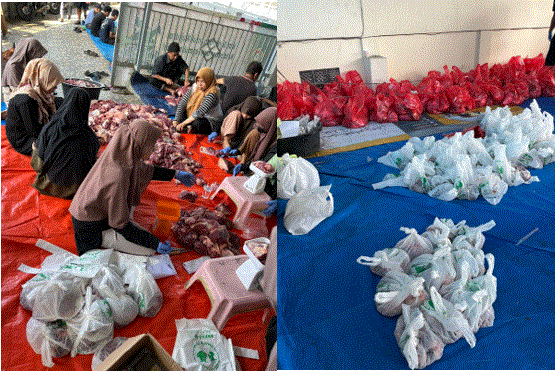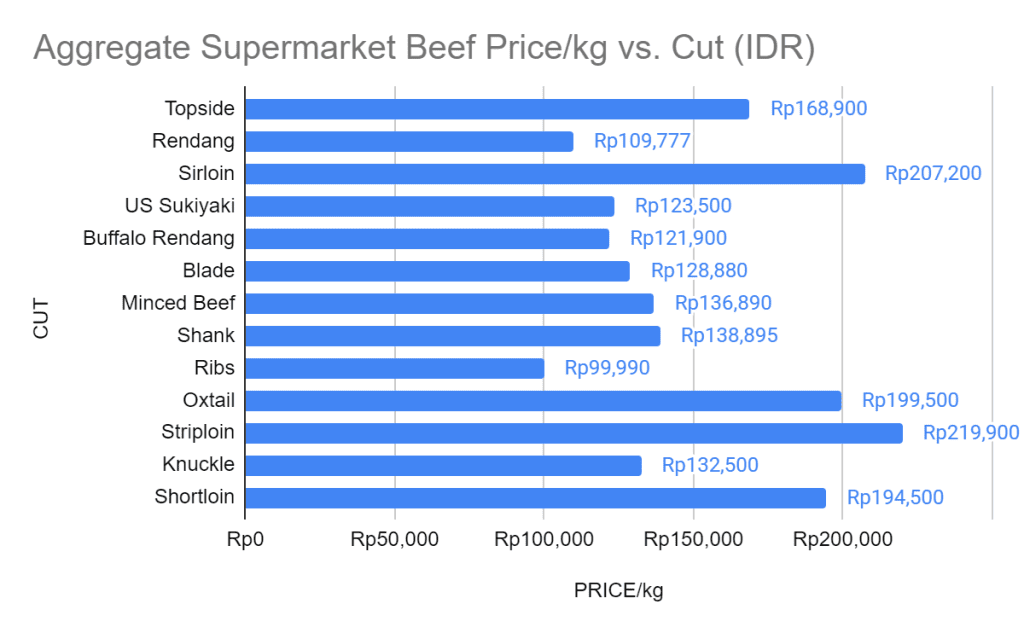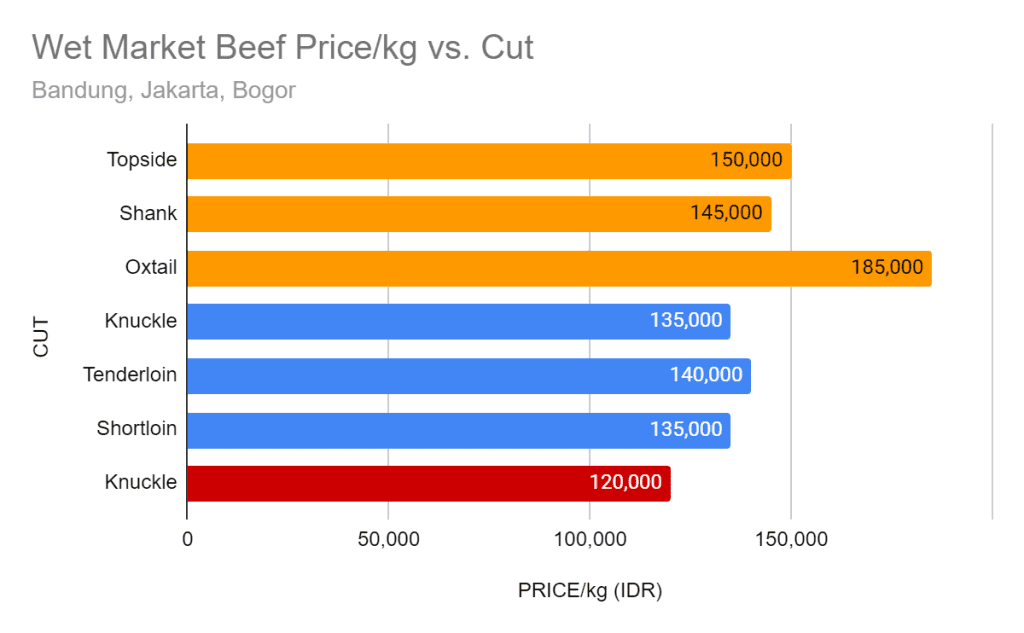
114th Edition: July 2023
Regional Livestock Movements and Trends
The South East Asian region will approach the second half of the year with cautious optimism. The drive for finding bargains and cheaper food will persist as cost of living pressures continue to be the main driving impact for most people in the region. Price will remain a strong driver for both live and boxed trade for most exporters. For those trading meat products in the region the online channels will continue to play a crucial role for all protein types in the region at a retail level and we are likely to continue to see ongoing expansion here.
For many animal protein sources we are seeing an increase in growth of intra-regional trade. This is driven from declining trade with the US and Europe and the re-emergence of the desire of most nations to enhance regional food security. For example, Thailand now has approval for 37 livestock production facilities to export to Malaysia, including local processed chicken, duck, and dairy.
For other animal products, local companies continue to identify opportunities in local processing for higher-end segments such as 5-star hotels and resorts. Investment is still largely in seafood, pork and processed products with the aim of establishing value chains with fully traceable products. The relatively low volume of beef production in local South East Asian abattoirs has resulted in it lagging behind some of the value-adding and high tech developments of other food products. There are challenges but this offers an opportunity for both live export and boxed exports of beef into the region with the right partnership and investment.
As of the start of July Vietnam has officially opened cattle trade back with Thailand through the Laos border after an extended period of trade blockage due to Salbutamol detection and the lack of adherence to quarantine requirements. 14 Thai farms have been given permission to export over 7,000 cows and buffalos worth USD 8.27 million from June 23 to September 23. However they also require a 28 day quarantine period. Cattle have reportedly still been entering into Vietnam during the ban period and so universal enforcement will be important.
As we move into the second half of 2023 the animal protein industry in South East Asia looks to recover and it will be the companies that can adapt and promote the changing consumer demands and purchasing behaviours that will continue to grow.
Indonesia : Steers AUD $5.23 / kg live weight (IDR 10,130.58 = 1 AUD)
In Greater Jakarta and West Java, there’s been a price decrease in terms of carcass and live cattle since Eid al Fitr this year (end April). Following Eid al-Fitr prices of Australian steers held out at 56,000 IDR /kg liveweight, and the carcass price was 110,000 IDR /kg. At present the highest price has now dropped back to 53,000 IDR /kg liveweight, and for carcass it is down to 104,000 IDR /kg.
Despite the price reduction we are still not seeing any significant slaughter volume increases in Indonesian abattoirs.
It is worth noting that the price of Broiler chicken carcass, which is usually the cheapest protein option, has increased significantly this month creating tension with shoppers. Before Qurban it was around 30,000 IDR, and now the cheapest price is 50,000 IDR /kg.
Quoting prices in supermarkets and wet markets is a challenge due to diversity in quality and differences between cuts and products, no different to Australia. This month I have aggregated products across three different supermarkets and between three wet markets in different Indonesian regions to show some trends which impact market development. Wet market products don’t really receive significantly higher value for any cuts, at least in the same way Australian products get a premium for loin cuts. This means that there is less price difference between cut types in wet markets meaning local processors/butchers can’t significantly reduce their secondary cut price to balance the carcass value. Frozen products generally do have higher product price variation. If they export their loin cuts at a premium price they can flood the Indonesian wet market with lower priced (but still high quality) frozen products.
As discussed in last months article, Qurban took place across the Islamic world from the 29 June to 1 July. In Indonesia this mainly involved local cattle and sheep depending on the area. Temporary sales yards and feeding stations were set-up around the country similar to below and these were then killed at temporary slaughterhouses, converted areas in mosques, or in some slaughterhouses.

Temporary sales pen and a temporary abattoir in Bandung Indonesia. The sales people deliver the animals to the slaughter point which may be a mosque or other location, or in larger cities like Jakarta an abattoir can be rented under a contract kill arrangement.
Cattle are usually sold to multiple people with the meat divided between the buyers of the animals. Donation is an important element of the sacrifice and so during the process meat needs to be packaged in a way that facilitates collection by different donors and further distribution to those in need. Local male brahman and limousin cross are preferred with heavier animals >1 tonne considered “special cattle” (sapi istimewa) and attract a price of about 100 million IDR (AUD $9,850). For local Bali or Madura cattle the price is around 58,000-60,000 IDR /kg liveweight, but most sellers do not use scales (they just guess). The preference is for the exotic cattle rather than the local breeds as they are believed to make better bakso meat balls, likely due to increased fat content. All prices usually include the delivery on the day.
Sales for Qurban around the region and in Indonesia have also been depressed and slower than before COVID. It seems to be a combination of buyer caution around cost of living concerns, school fees which are due imminently, and a shift to buying cheaper Qurban slaughtered overseas.

Ladies preparing meat for sale during the Qurban Festival in Bandung Indonesia. Each plastic bag is about 0.5-0.75kg of meat, some offal, and some chopped bone. One cow makes about 200 bags to donate or share with society.
Vietnam : Steers AUD $5.08 / kg live weight (VND15,749 = 1AUD)
Several shipments of cattle, including more breeder cattle, are due to continue to arrive in Vietnam through July. This is despite the relative volumes of cattle processed in slaughterhouses in northern Vietnam decreasing over the last few months. June processing numbers of Australian cattle have reportedly dropped about 30% since the start of the year and following the Tet holidays. This is quite a normal trend for Vietnam as Tet (held in Feb) is the major annual holiday, and the summer in the north of Vietnam marks the end of hot pot season and so there is a characteristic decrease in beef consumption. The concern is that the local slaughter numbers were already low compared to pre-COVID numbers.
As a positive we are seeing the start of a resurgence in the trade of livestock to southern Vietnam with several shipments now going to several different companies. This is in contrast to almost no Australian cattle being in southern feedlots only a few months ago. Caution is still needed as we have seen this behaviour before in Vietnam with companies importing lower priced cattle without having established sales channels.
The reduced movement of cattle across the border is contributing to a decreased supply of livestock in Vietnam from the region, so there is theoretically a need for Australian cattle. However there is a corresponding decrease in demand for locally processed cattle. Time will tell how fast these Australian cattle will sell. Slow sales will result in overfat or more expensive animals, which then don’t sell or need a price reduction, resulting in poorly performing businesses. This is becoming an all too common cycle in recent years in Vietnam.
Price for Australian cattle into abattoirs in Vietnam is for steers at VND 76,000-82,000 /kg liveweight depending on quality (I have used 80,000 above) and bulls from VND 83,000-84,000 /kg liveweight. Prices make cattle processing profitable but slow sales may challenge general business profitability, especially in competition with imported beef. Hot beef sold into wet markets is still wholesaling at around VND 205,000 (AUD $13).
I will be back in Vietnam next week and am looking forward to seeing firsthand how the market is evolving.
Philippines: Slaughter Steers AUD $3.77 / kg liveweight (P. 37.1 = 1AUD)
The Philippines is in the process of entering “vacation mode” where schools close for summer holidays and there is a corresponding lowered stress from a business perspective. This seems strange as the school holiday period generally increases my anxiety levels. One of the major stresses for business in the Philippines lately has been stability and this now seems to be returning to the many island nation. Gasoline prices have dropped from P.61 (AUD$1.64) in February to about P.50 (AUD$1.35) which has been important for many businesses.
Wet market and supermarket beef has remained constant at around P. 560/kg and P. 600/kg retrospectively for beef knuckle. Slaughter steer prices remain between P.130-140 /kg liveweight in Mindanao and hot carcass meat is around P.260 /kg.
Chicken prices into supermarkets have dropped slightly over the last few months and pork remains relatively stable. The Philippines has a heavy reliance on Brazilian chicken exports and the continued spread of the highly virulent strain of avian influenza in Brazil may have a significant impact in the coming months if that impact is not contained.
Thailand Steers AUD $4.54 (Tb 23.15 = 1 AUD)
Local bull prices remain at the Tb 95/kg. The shifting border closures in Vietnam with the reopening of trade officially for some regional traders will continue to be monitored. Some cattle were already being traded across the closed Laos – Vietnam border, so the impact of the official changes will be determined by how they manage the quarantine process and how strictly they limit unofficial movements of cattle across the border.
Feeder Steers Darwin $3.10, Townsville $2.80
We have seen a further drop in the prices out of both the NT and Qld over the last month. Prices out of Darwin have Indonesian feeder steers around $3.10 /kg liveweight and heifers at $2.60 /kg liveweight. Cows are down to around $2.50 / kg liveweight.
For Townsville, Brahman feeder steer prices continue to drop to around AUD $2.80, bulls for AUD$2.60 and heifers are now down to around $2.30.
DAFF reported export figures for the first half of the year were yet to be released at the time of printing. Darwin port had reported a total of 236,550 livestock exported for the FY 2022-23. This is well below the 10 year average of 377,000 but expected given depressed market demand conditions.



